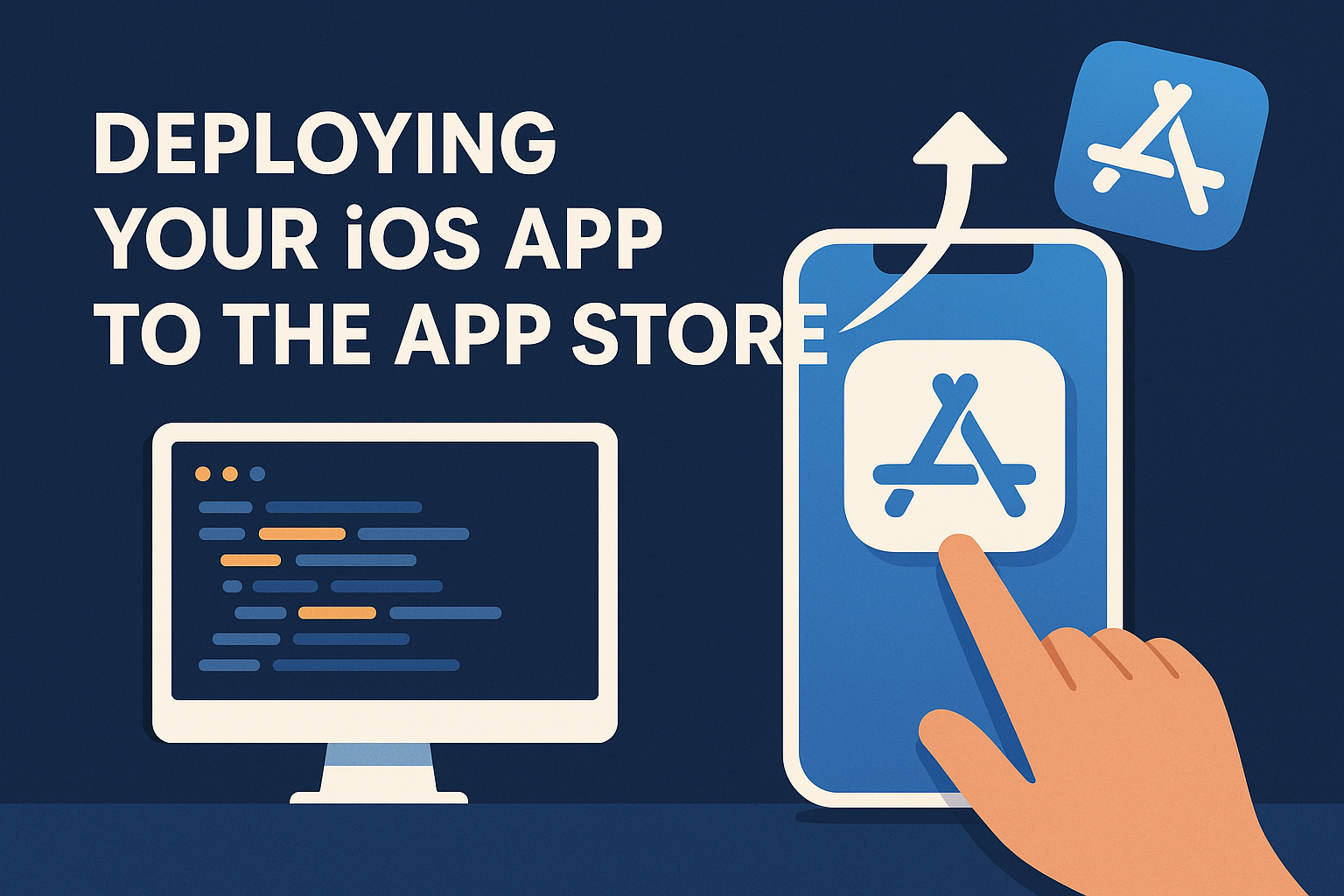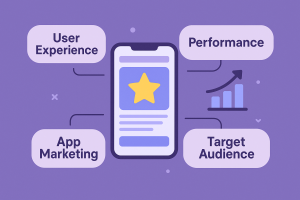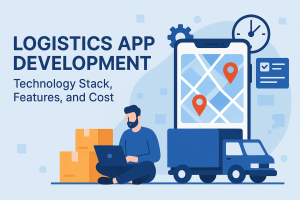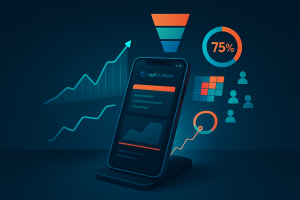Deploying your iOS app to the App Store is a critical milestone in your app development journey. With the increasing competition in the mobile market, ensuring that your app meets Apple’s standards and provides a seamless user experience is paramount. In this guide, we’ll walk through every phase of the deployment process—from initial planning and development through testing, submission, troubleshooting, and future-proofing your application. Our aim is to give you actionable insights and practical advice in a clear, conversational tone.
This guide covers:
- Preparing your app with solid planning and design
- Building, testing, and refining your app
- Preparing for deployment with Apple’s code signing, provisioning, and Xcode configurations
- Navigating the App Store submission and review process
- Overcoming common pitfalls and troubleshooting
- Adapting to iOS updates and planning for the future
Each section includes practical details to help you avoid delays and ensure a smooth journey from development to launch.
1. Laying a Solid Foundation
Concept and Planning
Before writing a single line of code, it’s essential to establish a clear roadmap. Start by defining the core concept of your app. Ask yourself:
- What problem am I solving?
- Who is my target audience?
- What unique features will my app offer?
By answering these questions, you set the tone for every subsequent step. A well-documented vision not only guides development but also ensures you remain focused on delivering value to your end users. For a comprehensive overview of building your app’s vision and laying a solid foundation, consider exploring this in-depth iOS app development guide that dives into crafting your app from the ground up.
Mapping Out the App Development Process
Once your concept is clear, the next step is to map out your development process. Establish milestones for design, development, testing, and deployment. Create detailed wireframes and user flowcharts, which serve as blueprints throughout your project’s lifecycle. A structured plan ensures smooth collaboration with your development team and minimizes unexpected hurdles along the way.
Incorporate industry standards and best practices from start to finish. A defined process helps bridge creative ideas with practical implementation, reducing development time and enhancing app quality.
2. Building and Testing Your iOS App
Development Best Practices
When you start coding your app, maintain best practices such as writing clean, modular code, and using version control systems like Git. These practices ensure that your project remains manageable and scalable as it grows.
Employ the Model-View-Controller (MVC) or other suitable design patterns to separate concerns in your codebase. This not only simplifies maintenance but also facilitates easier testing and troubleshooting later on.
If you’re just beginning your journey in mobile development, this detailed mobile app development guide for beginners can provide you with practical advice and clear examples to streamline your initial efforts.
Rigorous Testing and Quality Assurance
Quality assurance is a continuous process. Break your testing strategy into multiple levels to guarantee the best user experience:
- Unit Testing: Verify that individual components behave as expected.
- Integration Testing: Ensure that modules interact correctly.
- User Testing: Collect real user feedback early in the development cycle.
- Beta Testing: Use tools like TestFlight to distribute your app among testers and gather insights on its performance and usability.
- Performance Testing: Optimize your app to run smoothly without causing excessive battery drain or lag.
Thorough testing not only improves your app’s stability but also helps detect issues that could jeopardize your app’s review during deployment.
3. Preparing Your App for Deployment
Code Signing and Provisioning
Before you can submit your app to the App Store, you must properly manage code signing and provisioning. Apple requires every app to be digitally signed, verifying that the app’s source is trusted and unaltered post-compilation.
Steps to get this right:
- Enroll in the Apple Developer Program: This grants access to essential development resources and App Store Connect.
- Generate Certificates: Create development and distribution certificates using Xcode or the Apple Developer portal.
- Create Provisioning Profiles: Link your certificates to your app’s Bundle ID. Provisioning profiles permit your app to run on selected devices and environments.
- Set Up Entitlements: Define the specific capabilities your app will use (e.g., push notifications, in-app purchases).
These steps are pivotal; a misconfigured certificate or profile can cause unexpected delays when submitting your app for review.
Utilizing Xcode for App Deployment
Xcode, Apple’s integrated development environment (IDE), is at the heart of iOS app development and deployment. With the advent of Xcode 14, the process has become more streamlined, offering enhanced build, testing, and debugging tools. In order to take full advantage of the latest features and improvements, stay updated with these changes. For detailed insights on harnessing the new features, check out this essential piece on the Xcode 14 update for app store deployment.
Finalizing App Metadata and Assets
A successful deployment is not just about the code—it’s also about how your app presents itself on the App Store. Prepare and polish the following elements:
- App Name and Description: Clearly articulate what your app does and how it benefits users.
- Screenshots and Videos: High-quality visuals are crucial for showcasing your app’s features and usability.
- Keywords: Naturally integrate semantic keywords related to iOS deployment, such as “App Store submission,” “code signing,” “Xcode deployment,” and “iOS provisioning.”
- Privacy Policy: Ensure your app complies with Apple’s privacy standards by including a comprehensive privacy policy.
Well-crafted metadata improves your app’s discoverability and sets the right expectations for potential users.
4. The Submission Process: From App Store Connect to Approval
Creating Your App Record on App Store Connect
The journey to launch begins on App Store Connect. Here, you’ll create a detailed record for your app by providing:
- Bundle Identifier: Ensure it matches the one used in your Xcode project.
- App Information: Input essential details, such as app name, category, and age rating.
- Pricing and Availability: Decide on your app’s pricing model and geographic availability.
Accurate and complete information at this stage reduces the risk of delays during the review process.
Uploading and Validating Your Build
After you have finalized your app’s metadata and created an app record, the next step is uploading your build:
- Archive Your Build: Use Xcode to create an archive of your app.
- Validate the Build: Before submission, Xcode’s built-in validation feature checks your app for common issues.
- Submit for Review: Once validation is successful, submit your build through App Store Connect.
This submission phase requires patience. Apple’s review team meticulously evaluates your app based on functionality, content quality, design consistency, and compliance with the App Store guidelines.
Navigating the Review Process
The review process is often the most nerve-wracking part of deployment. Apple inspects various aspects of your app:
- User Interface and Experience: Consistency and intuitiveness are key.
- Content and Functionality: Ensure there are no broken features or content that might offend users.
- Compliance: Adhere to all security, privacy, and technical guidelines provided by Apple.
While it might seem daunting, preparing in advance for common review pitfalls can increase your chances of a smooth approval. Use the collective wisdom of experienced developers and study the common mistakes in mobile app development to steer clear of frequent errors.
5. Overcoming Challenges and Troubleshooting Common Issues
Even with meticulous preparation, problems can occur throughout the deployment process. Anticipating and addressing these issues early can save you significant time and frustration.
Troubleshooting Code Signing and Provisioning Errors
One of the most common challenges encountered during deployment is related to code signing and provisioning. If you encounter errors such as mismatched bundle identifiers, expired certificates, or invalid profiles, follow these steps:
- Verify Certificate Validity: Log in to your Apple Developer account to ensure your certificates have not expired.
- Double-Check Bundle Identifiers: Ensure consistency between your Xcode project and App Store Connect entries.
- Recreate Provisioning Profiles: If errors persist, recreate the provisioning profiles with the correct settings.
For additional advice on troubleshooting common iOS issues, refer to this detailed guide on troubleshooting common iOS issues.
Avoiding Common Pitfalls
Many developers face setbacks due to oversights or misinterpretations of Apple’s guidelines. One effective way to stay ahead of potential issues is to study real-world experiences and tips from the development community. Identify the pitfalls that are most prevalent during the deployment phase and plan accordingly. Drawing on insights from experienced professionals can help you navigate complexities smoothly.
Understanding the common mistakes in mobile app development ensures you’re aware of pitfalls like inadequate testing, poor user interface design, and misconfigured metadata.
6. Adapting to iOS Updates and Future-Proofing Your App
Staying Current with iOS Evolution
Apple regularly updates iOS, introducing both new features and changes to existing guidelines. These updates can affect how your app performs or how it is reviewed. For instance, changes in the user interface standards or new security requirements mean that staying updated is not optional—it’s essential.
Keep track of the latest release notes and developer announcements. When preparing for major updates, such as the essential fixes introduced in the iOS 18.3.1 update, make sure your app remains compatible by testing thoroughly on new versions of iOS.
Planning for Scalability and Future Enhancements
Deploying your app is not the end of its lifecycle. In fact, it marks the beginning of an ongoing cycle of improvement. As your user base grows, so too does the need to update your app with new features and bug fixes. Future-proof your app by:
- Designing a Modular Architecture: Build your app in a way that allows you to add or update features without rewriting the entire codebase.
- Monitoring User Feedback: Use analytics and user reviews to identify areas that need improvement.
- Planning Regular Updates: Schedule consistent maintenance and feature updates to keep your app relevant in a rapidly evolving market.
A forward-thinking approach not only helps you retain users but also ensures that your app evolves along with technological advancements.
7. Real-World Examples and Best Practices
Case Study: A Successful App Deployment
Consider an app that started as a small idea in a bustling market. Its creators began with a detailed plan, sketched out every user interface element, and built the app using agile methodologies. They integrated rigorous testing at every phase—unit tests, integration tests, and real-world beta testing through TestFlight.
Key factors in their success included:
- A Robust Planning Phase: Every team member understood the app’s goals and user expectations.
- Smooth Code Signing and Provisioning: Strict adherence to Apple’s guidelines and careful configuration led to a seamless build validation.
- Efficient Use of Xcode: Leveraging the latest features in Xcode 14 streamlined the packaging and submission process.
- Proactive Issue Resolution: The team anticipated common pitfalls and studied available resources on troubleshooting and best practices.
By learning from such success stories, you can adopt strategies that enhance your deployment process and improve your app’s chances of success on the App Store.
Incorporating Feedback and Continuous Improvement
The journey doesn’t end with the app’s launch. Real-time feedback from users provides critical insights that can help you make meaningful improvements. Regular updates based on user feedback demonstrate commitment to excellence and often translate to a more engaged user base.
For entrepreneurs and developers striving to refine their products, exploring strategies to create a successful mobile application can offer tips on iteration and long-term planning.
8. Practical Tips for a Smooth Deployment
Essential Steps Recap
Before you hit the deploy button, here’s a quick checklist of essential steps:
- Concept & Planning: Establish a clear vision and strategic roadmap.
- Development & Testing: Write clean code, perform exhaustive testing, and iterate based on real user feedback.
- Code Signing & Provisioning: Ensure that all certificates, profiles, and entitlements are correctly set up.
- Submission via App Store Connect: Create a detailed app record, validate your build, and submit your app.
- Post-Submission Troubleshooting: Be ready to address any issues flagged during the review process.
Each of these steps plays a critical role in ensuring that your app meets Apple’s stringent standards and appeals to your target market.
Learning from the Community
Even if you follow best practices, you might still encounter challenges along the way. Engage with other developers and keep up with forums, webinars, and blog posts. They provide valuable insights into the ever-evolving process of app deployment. For those just getting started, this mobile app development guide for beginners is an excellent resource to build your confidence and skills.
9. Conclusion
Deploying your iOS app to the App Store is a journey that requires careful planning, attention to detail, and a commitment to quality. By establishing a clear concept, following a structured development process, rigorously testing your product, and meticulously handling code signing and deployment details, you can navigate Apple’s submission process with greater assurance.
Remember to address issues proactively by learning from common pitfalls and staying current with iOS updates. By incorporating practical advice—from leveraging the power of the latest Xcode features to troubleshooting common errors—you’ll be well-equipped for success on the App Store.
As you embark on or continue your app deployment journey, trust that every step—from planning and development to submission and iterative updates—builds toward a robust and successful application. Embrace the challenges and learn continuously; your dedication and attention to detail will make all the difference in achieving lasting success.
For further inspiration and tips to smooth out the finer details of deployment, refer to the practical wisdom shared in resources like the comprehensive app development process, and learn from the experiences of others.







